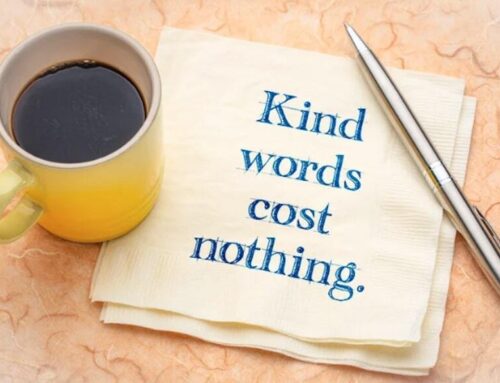
The workplace is ripe with various types of conflict. Whenever people with different opinions collaborate to reach a common goal, disagreements are bound to arise. However, contrary to what most people assume, not all conflicts are destructive.
The way conflict is approached makes a big difference. When handled poorly, it can become destructive conflict, damaging relationships and disrupting productivity. On the other hand, when handled well, conflict can be a powerful tool to develop stronger teams and even groundbreaking ideas.
Unlike destructive conflict, constructive conflict can be seen as a way to refine and strengthen, not destroy. Instead of focusing on personal grievances, it shifts the attention to shared goals and solutions. The key is learning how to manage these disagreements productively. Organizations that embrace this approach see improvements in innovation, team trust, and overall workplace harmony.
This blog explores constructive conflict, why it matters, and how to leverage it for peace and productivity.
What is Constructive Conflict?
Constructive conflict is a type of disagreement that focuses on shared goals, mutual respect, and problem-solving. It’s not about “winning” or “losing” but about finding a resolution that benefits everyone involved.
Unlike destructive conflict, which often includes personal attacks, avoidance, or hostility, constructive conflict emphasizes open dialogue, leveraging emotional intelligence skills, and respect.
Key Characteristics of Constructive Conflict
- Open Communication: Communication is at the heart of constructive conflict. This means not just speaking but engaging in active listening, which consists of understanding the other person’s perspective. It involves acknowledging differences without invalidating someone else’s feelings or ideas.
- Emotional Regulation: Conflict can bring out strong emotions like frustration, anger, or hostility. Managing these feelings is critical for keeping disagreements productive. It is important to have self-calming techniques during conflict, such as taking breaks or reframing the conversation to focus on shared goals.
- Mutual Respect: Even when opinions diverge, mutual respect is non-negotiable. When participants feel respected, they are more likely to engage constructively and work toward a resolution. Respect in conflict resolution fosters trust and long-term collaboration.
Constructive vs Destructive Conflict
The distinction between constructive and destructive conflict lies in both process and outcome. Destructive conflict often includes blame, stonewalling, and destructive behavior, which can escalate the disagreement. In contrast, constructive conflict avoids personal attacks and focuses on solutions.
The difference between constructive and destructive conflict also lies in the emotional and psychological impact they have on teams. Destructive conflict tends to create a toxic environment where fear, resentment, and mistrust flourish, making it difficult for teams to collaborate effectively. Destructive conflict often derails productivity as people focus more on defending themselves than resolving the issue at hand.
On the other hand, constructive conflict fosters a positive atmosphere by encouraging respectful dialogue, active problem-solving, and a shared commitment to achieving team goals. Rather than breaking relationships, it strengthens them, creating a foundation for long-term collaboration and trust.

Importance of Constructive Conflict in Team Dynamics
Teams thrive when there’s a balance between harmony and healthy disagreement. Constructive conflict ensures this balance by fostering open dialogue, encouraging different opinions, and strengthening team cohesion.
Here’s how it enhances team dynamics:
1. Builds Trust and Psychological Safety Within Teams
Trust is the cornerstone of effective teamwork. Without it, even the most talented teams can falter. Constructive conflict builds trust by creating a safe space for honest conversations. When team members feel safe expressing concerns or offering feedback, they are more likely to engage fully.
Psychological safety plays a crucial role in fostering collaboration. Encouraging team members to reflect on their attitudes toward conflict and practice respectful dialogue creates an environment where everyone feels heard and valued. This focus on open communication and mutual respect strengthens team dynamics and paves the way for productive collaboration.
2. Reduces Groupthink and Encourages Diverse Perspectives
Groupthink is a common pitfall in teams striving to maintain harmony. It occurs when group members avoid voicing dissenting opinions to avoid disrupting consensus. While it may seem like an efficient way to keep peace, it often leads to poor decision-making and missed opportunities.
Encouraging constructive conflict helps teams avoid groupthink by promoting diverse perspectives. Leaders have a role in fostering dissent. For instance, assigning a “devil’s advocate” during meetings ensures that all ideas are critically examined, leading to better outcomes.
3. Strengthens Relationships and Promotes Teamwork
Disagreements don’t have to weaken relationships-they can strengthen them. When managed constructively, conflict helps team members develop a better understanding of each other’s strengths, perspectives, and working styles. This not only improves collaboration but also enhances overall team morale.
Take the example of a team working on a tight deadline. A disagreement about resource allocation could either spiral into resentment (destructive conflict) or lead to a productive conversation about priorities (constructive conflict). The latter fosters teamwork and trust.

Impact of Constructive Conflict on Organizational Growth
The benefits of constructive conflict extend far beyond individual teams. When organizations embrace conflict as an opportunity rather than a setback, they pave the way for growth in multiple areas.
1. Improved Decision-Making Through Diverse Perspectives
Good decisions don’t come from everyone agreeing on everything. Instead, they emerge when different opinions are shared, debated, and refined. Encouraging constructive conflict allows organizations to uncover insights they might otherwise overlook.
According to Harvard’s Program on Negotiation, conflicts that focus on understanding and resolving differences lead to more thorough evaluations of options and, ultimately, smarter decisions.
For example, imagine a product development team debating the best features to include in a new launch. If team members are afraid to voice disagreements, they risk creating a product that doesn’t meet customer needs.
However, when employees feel empowered to challenge assumptions, the resulting product is more likely to address real-world demands and stand out in the market. Encouraging constructive conflict ensures that all perspectives are heard and considered before decisions are finalized.
2. Increased Creativity and Innovation From Open Dialogue
Creativity thrives when ideas are challenged and improved through discussion. Constructive conflict provides a space for these conversations to happen. When leaders encourage healthy debate, they create an environment where innovation flourishes.
For example, companies like Ariel Investments assign “devil’s advocates” during team meetings to poke holes in proposals. This method pushes employees to think critically and refine their ideas.
3. Higher Employee Engagement and Satisfaction
When employees feel their opinions matter, they are more likely to stay engaged and committed to their work. Organizations that foster constructive conflict create a culture where everyone has a voice. This not only boosts morale but also strengthens loyalty.
When workers feel safe expressing different opinions, they experience less stress and greater job satisfaction. This reduces turnover and fosters a more collaborative workplace.
4. Stronger Organizational Resilience
Every organization faces challenges, whether it’s adapting to market shifts or overcoming internal obstacles. Constructive conflict equips teams to tackle these issues head-on. By addressing disagreements openly and leveraging different opinions, organizations build resilience and adaptability.
For instance, during times of uncertainty, constructive conflict allows teams to identify risks and develop contingency plans. Instead of avoiding hard conversations, resilient organizations engage in productive discussions that lead to stronger outcomes.
5. Enhanced Leadership Effectiveness
Finally, constructive conflict benefits leaders as much as their teams. Leaders who model respectful dialogue, active listening, and emotional regulation set a standard for how disagreements should be handled across the organization.
When leaders embrace conflict as a tool for growth, they not only improve team dynamics but also demonstrate the importance of collaboration and accountability. Over time, this approach establishes trust and ensures that conflict becomes an opportunity rather than a barrier.
Common Misconceptions About Conflict
Conflict often gets a bad reputation. Many of us have been taught to avoid disagreements or view them as purely destructive experiences. But not all conflict is harmful. In fact, some of the most productive changes in teams and organizations come from well-managed disagreements.
1. All Conflict Is Inherently Destructive
Many people believe that conflict always leads to tension and harm. This belief often stems from experiences with destructive conflict, where emotions run high and disputes become personal. However, the reality is that conflict, when handled constructively, can lead to growth and better collaboration.
Engaging in conflict with coworkers through a constructive approach encourages groups to share different opinions. This process creates opportunities for creative problem-solving and smarter decision-making. Instead of viewing conflict as something to avoid, organizations should recognize its potential to build trust and foster innovation.
2. Avoiding Conflict Ensures Harmony
It’s easy to think that avoiding disagreements will keep the peace. However, avoiding conflict doesn’t resolve underlying issues-it often makes them worse. Suppressing disagreements leads to unresolved tension, which can bubble up later in unexpected and harmful ways.
It is important to address conflicts directly rather than letting them fester. When disagreements are avoided, teams miss out on valuable opportunities to create solutions that benefit everyone. Leaders play a key role in encouraging open conversations to prevent resentment and disengagement.
3. Conflict Damages Relationships
Another common misconception is that conflict always harms relationships. While poorly managed disputes can cause rifts, properly handled disagreements often strengthen bonds. When people work through differences collaboratively, they develop a deeper understanding of each other’s perspectives.
One of the rules for constructive conflict emphasizes focusing on listening and respecting the other party’s feelings or ideas before diving into solutions. This approach not only resolves issues but also builds trust and mutual respect. Instead of fearing conflict, teams should view it as an opportunity to enhance relationships.
4. All Conflicts Should Be Resolved Immediately
It’s tempting to think that every disagreement needs to be settled right away. While it’s true that unresolved conflicts can create long-term challenges, rushing to resolve them isn’t always the best strategy. Sometimes, taking a step back to cool down or strategize leads to better outcomes.
Leaders and teams should use breaks to reflect on their positions and identify shared goals. Similarly, the University of Montana advises prioritizing emotional regulation before diving into solutions. By pausing to collect thoughts, participants avoid escalating tensions and ensure more productive conversations.
Imagine two coworkers in a heated disagreement. Instead of forcing a resolution immediately, they could take time to reflect, seek input from others, and return to the conversation with a clearer mindset. This scenario highlights one of many conflict resolution examples where patience and reflection lead to more productive and professional outcomes.
5. Conflict Is Only About Personalities or Emotions
Many people assume that conflict arises solely from personality clashes or emotional reactions. While emotions and personalities do play a role, most disputes stem from deeper issues like unmet needs, structural challenges, or differing goals.
It is important to identify the root cause of disagreements instead of focusing on surface-level issues. This perspective helps teams move beyond personal blame and address the factors that drive conflict.
In practice, this might look like recognizing that a disagreement about timelines isn’t about laziness but about unclear expectations. By addressing the structural issues at play, teams can resolve conflicts more effectively and prevent similar problems in the future.

Methods for Facilitating Constructive Conflict in Organizations
Now that we’ve addressed common misconceptions, how can organizations foster constructive conflict?
1. Create Psychological Safety
Psychological safety is the foundation of constructive conflict. It ensures that team members feel safe expressing their thoughts and different opinions without fear of judgment or retribution. When employees know their voices matter, they’re more likely to engage in meaningful conversations.
Building psychological safety requires leaders to model respectful behavior and encourage open dialogue. This creates an environment where teams can address differences productively.
2. Use the LARA Method
The LARA method-Listen, Affirm, Respond, Add-is a powerful tool for managing conflict. This approach focuses on understanding the other party’s needs before sharing your own perspective.
- Listen: Pay attention to both verbal and nonverbal cues.
- Affirm: Acknowledge the emotions or values behind what’s being said.
- Respond: Address the issues raised thoughtfully.
- Add: Share your perspective to move the conversation forward.
3. Introduce a Devil’s Advocate Role
Assigning a devil’s advocate during team discussions helps challenge assumptions and explore alternative ideas. This approach encourages constructive conflict by ensuring that all perspectives are considered.
At Ariel Investments, for example, leaders assign this role in team meetings to encourage teams to make better decisions. By embracing dissent, organizations can uncover hidden opportunities and avoid groupthink.
4. Focus on Feelings First, Then Issues
Addressing emotional responses before diving into problem-solving helps de-escalate tensions. One of the rules for constructive conflict advises prioritizing emotions to create a calm and respectful atmosphere.
Imagine a team member expressing frustration about missed deadlines. Instead of dismissing their concerns, the team could acknowledge their feelings and engage in collaborative conflict to work together and identify effective solutions.
5. Promote Win-Win Thinking During Conflict Resolution
Constructive conflict is most effective when it leads to mutually beneficial outcomes. By focusing on shared goals and avoiding adversarial tactics, teams can create solutions that benefit everyone.
Harvard’s Program on Negotiation emphasizes the importance of collaboration in achieving win-win resolutions. This mindset strengthens relationships and ensures long-term success.
6. Prepare Extensively for Conflicts
Preparation is key to managing conflict effectively. Teams should align on goals, anticipate areas of disagreement, and develop strategies to address challenges before they escalate.
Preparation includes clarifying team roles and ensuring everyone understands the organization’s priorities. This proactive approach minimizes misunderstandings and keeps teams focused on solutions.
Overview of AllWin’s Training Programs and Workshops
At AllWin Conflict Resolution Training, we specialize in helping organizations transform conflict into opportunities for growth. Our programs are designed for leaders, employees, and specific roles like customer service professionals and educators. By equipping teams with tools like emotional regulation and effective communication, we empower them to handle disagreements constructively.
Whether through workshops or online courses, the goal of our constructive conflict training is to help organizations build cultures of trust and collaboration.
Embrace Conflict as a Catalyst for Growth
Constructive conflict isn’t just about resolving disputes-it’s about transforming disagreements into opportunities for innovation and connection. By addressing common misconceptions and implementing proven strategies, organizations can turn conflict into a powerful tool for success.
At AllWin, we’re here to guide you every step of the way. Let’s work together to create workplaces where conflict drives progress.

About the Author: Jeremy Pollack
Jeremy Pollack, Ph.D. is the founder of Defuse De-Escalation Training, a sister company of Pollack Peacebuilding Systems, the largest workplace conflict resolution training and consulting firm in North America. He actively participates in de-escalation training and consulting initiatives for a variety of industries, from Fortune 500 companies to well-known non-profits. Besides his Ph.D. in Psychology from Grand Canyon University, Jeremy holds a Master’s Degree in Negotiation, Conflict Resolution, and Peacebuilding (NCRP) from California State University, Dominguez Hills. He is also a member of several organizations focused on conflict resolution and peacebuilding, such as the Peaceful Leadership Institute, the Association for Conflict Resolution, and the Division 48 (Division of Peace Psychology) of the American Psychological Association. Jeremy also holds several certifications in the field of training and coaching: he is a Certified Organizational Development Coach (CODC™), a Certified Clinical Trauma Specialist-Individual (CCTS-I™), and an Associate Certified Coach (ACC) under the International Coaching Federation.









